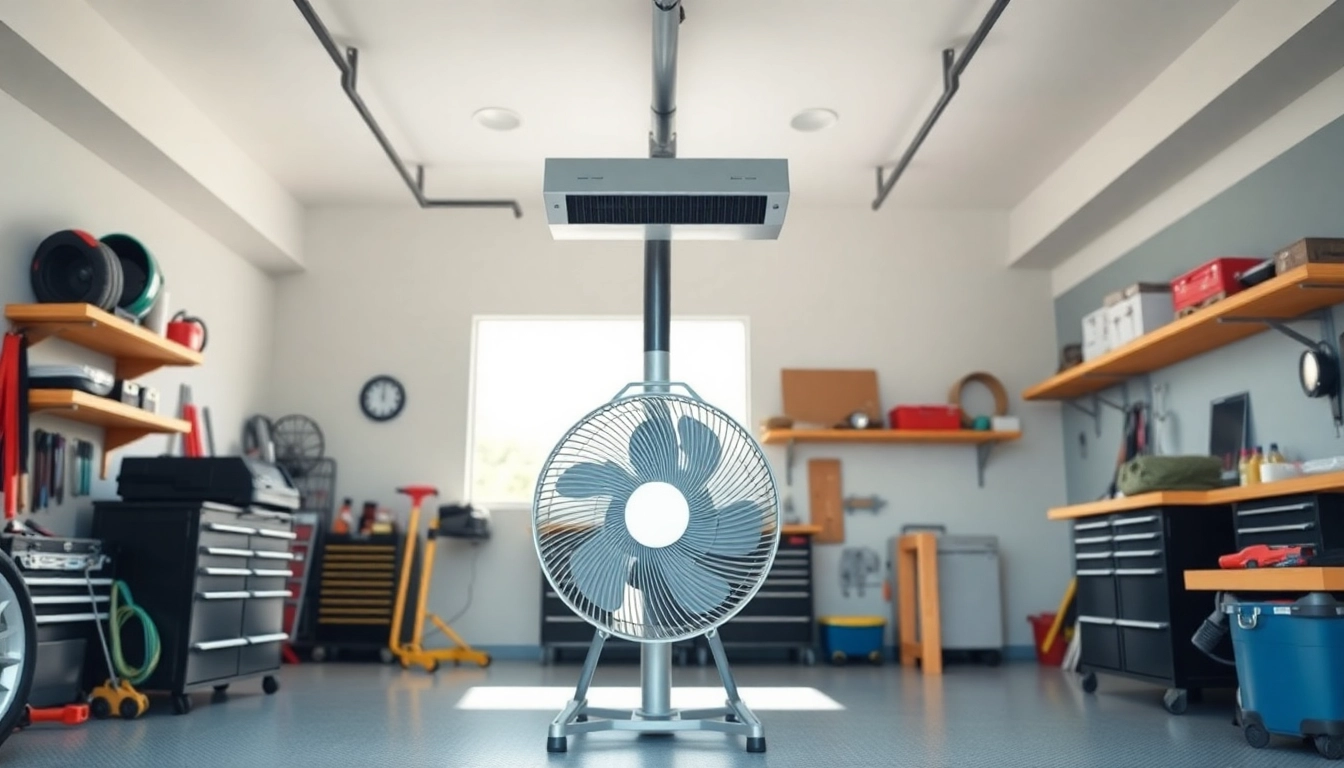Understanding the Importance of Cooling Your Garage
Many homeowners find that their garages often become an unwelcome heat trap, especially during the sweltering months of summer. A garage that exceeds comfortable temperatures can not only be uncomfortable for tasks like working on cars or utilizing it as a storage space, but it might also pose risks to any items stored within. Understanding how to cool a garage effectively is essential for a plethora of reasons, ranging from the preservation of tools and equipment to enhancing overall comfort and productivity when spending time in this space.
The Role of Garage Insulation in Temperature Control
Insulation acts as the foremost line of defense against unwanted heat influx into your garage. An adequately insulated garage helps maintain a consistent temperature throughout the year, keeping the heat out during the summer and retaining warmth in the winter. Consider various materials such as fiberglass, foam board, or spray foam insulation to cater to your specific needs.
When insulating your garage, take note of these points:
- Evaluate the existing insulation in the walls, doors, and even the ceiling.
- Seal any gaps and cracks where air might escape or enter.
- Consider adding insulation to the garage door, as it often is a significant source of heat transfer.
Identifying Common Garage Heat Sources
Before tackling the cooling process, it’s essential to identify the common sources of heat accumulation in your garage. These may include:
- Inadequate ventilation – meager airflow can cause hot air to stagnate.
- Sun exposure – if the garage has large windows or is pitched in direct sunlight, it can heat up quickly.
- Heat-producing appliances and tools – characteristics often overlooked include tools or appliances that generate excess heat, like compressors or heaters.
Assessing Your Garage’s Ventilation Needs
Ventilation is a crucial factor in keeping your garage cool. Proper airflow not only minimizes heat but also increases air quality, preventing humidity buildup. Assessing existing ventilation systems or lack thereof can help determine the best approach for improvement.
Consider these solutions for enhancing ventilation:
- Installing vents that allow for cross-breezes.
- Using exhaust fans to expel hot air.
- Opening windows and doors when feasible to maintain airflow.
How to Cool a Garage: DIY Techniques and Solutions
Using Fans for Improved Air Circulation
A fan is one of the simplest and most effective ways to promote air circulation in your garage. If structured properly, fans can create drafts that help push out warm air, while also bringing in cooler air. Here are some practical tips:
- Position fans near windows to extract hot air from within the garage.
- Attach oscillating fans to walls for broader coverage.
- Invest in high-velocity fans for added power.
Installing Ceiling Fans: Benefits and Best Practices
Ceiling fans are a great long-term investment for consistent cooling in your garage. They not only circulate air but also can create a cooling effect on your skin through evaporation. To maximize ceiling fan effectiveness:
- Choose a fan with a high airflow rating to suit the size of your garage.
- Install the fan at least 7 feet above the ground for optimal efficiency.
- Utilize the reverse switch on the fan during winter months to redistribute warm air.
Implementing Shade Solutions: A Step-by-Step Guide
Implementing shading can significantly reduce the temperature within your garage. There are various shading solutions to consider:
Step 1: Evaluate the Garage Orientation – Determine where the sun hits the garage most directly.
Step 2: Choose Your Shade Type – Options can include awnings, pergolas, or sunshades.
Step 3: Install – Follow installation instructions to ensure proper function and look. Ensure it is secure to endure any weather conditions.
Advanced Cooling Options for Your Garage
Exploring Air Conditioning Units: Pros and Cons
Air conditioning systems can provide a fantastic cooling solution, especially in hotter climates. However, they come with certain pros and cons to consider:
Pros:
- Provides consistent temperature control.
- Can be adapted for humidity management.
- Range from portable units to full central systems based on your needs.
Cons:
- Higher energy costs compared to other cooling methods.
- Requires installation and potential maintenance.
- May not be suitable if your garage is too large without proper sizing.
Innovative Cool Roof Techniques for Enhanced Efficiency
A cool roof is a system that reflects more sunlight and absorbs less heat than a standard roof. If your garage is subjected to extreme heat, a cool roof can be an excellent investment. Consider the following approaches:
- Cool roof coatings – reflective, light-colored coatings that can be applied to your existing roof.
- Installation of a green roof to reduce heat absorption through soil and vegetation layers.
- Using insulated roof panels during construction or remodeling.
Using Mist Cooling Systems for Ultimate Relief
Mist cooling systems can significantly drop temperatures in outdoor areas. Using fine water mist dispersed through a fan provides comfort in high temperatures, making it an ideal option for garages that are regularly utilized. Key components include:
- Mist lines that require proper installation for even dispersion.
- A water supply connection that can accommodate the mist system setup.
- A fan to help spread the mist efficiently across the area.
Energy Efficiency and Cost Considerations
Calculating the Cost of Cooling Solutions
Understanding the cost implications of various cooling solutions is essential for homeowners. Here are some critical factors to consider when calculating expenses:
- Initial purchase and installation costs associated with different systems.
- Operational costs – including electricity consumption and potential maintenance.
- Longevity of equipment and potential return on investment through energy savings.
Identifying Energy-Efficient Products and Tools
It’s crucial to focus on energy efficiency to lower long-term operating costs. Seek products labeled as energy-efficient, which usually consume less energy while providing optimal performance. Look for:
- Energy Star certified cooling appliances.
- Fans with high airflow while consuming minimal energy.
- LED lighting fixtures that offer bright illumination without excess heat generation.
Incorporating Smart Technology for Better Control
Smart technology has increased energy management capabilities in many homes. By incorporating smart thermostats and automation tools into your garage, you can achieve optimal cooling and energy savings:
- Set schedules for fans and air conditioning units to run only when needed.
- Utilize temperature sensors to monitor and adjust cooling efforts in real-time.
- Remote access through mobile devices to control garage environment from anywhere.
Maintaining Your Garage Cooling System
Regular Maintenance Tips for Longevity
Engaging in regular maintenance of your cooling systems will ensure longevity and performance. Some tips include:
- Clean or replace filters on fans and air conditioning units regularly.
- Inspect insulation for any wear or gaps.
- Check for any blockages in vents or ducts to prevent heat stagnation.
Seasonal Adjustments to Your Cooling Setup
Make seasonal adjustments to keep your garage comfortable year-round. For example:
- In the summer, focus more on cooling solutions and ventilation.
- In winter, consider utilizing heating solutions to maintain warmth, while ensuring ventilation to keep humidity at bay.
Monitoring Effectiveness and Performance Metrics
Track the effectiveness of your cooling methods to know what works best for your garage. Consider keeping records of temperature variations, energy consumption, and any noted fluctuations in comfort level. Use this data to refine your approach continually.



